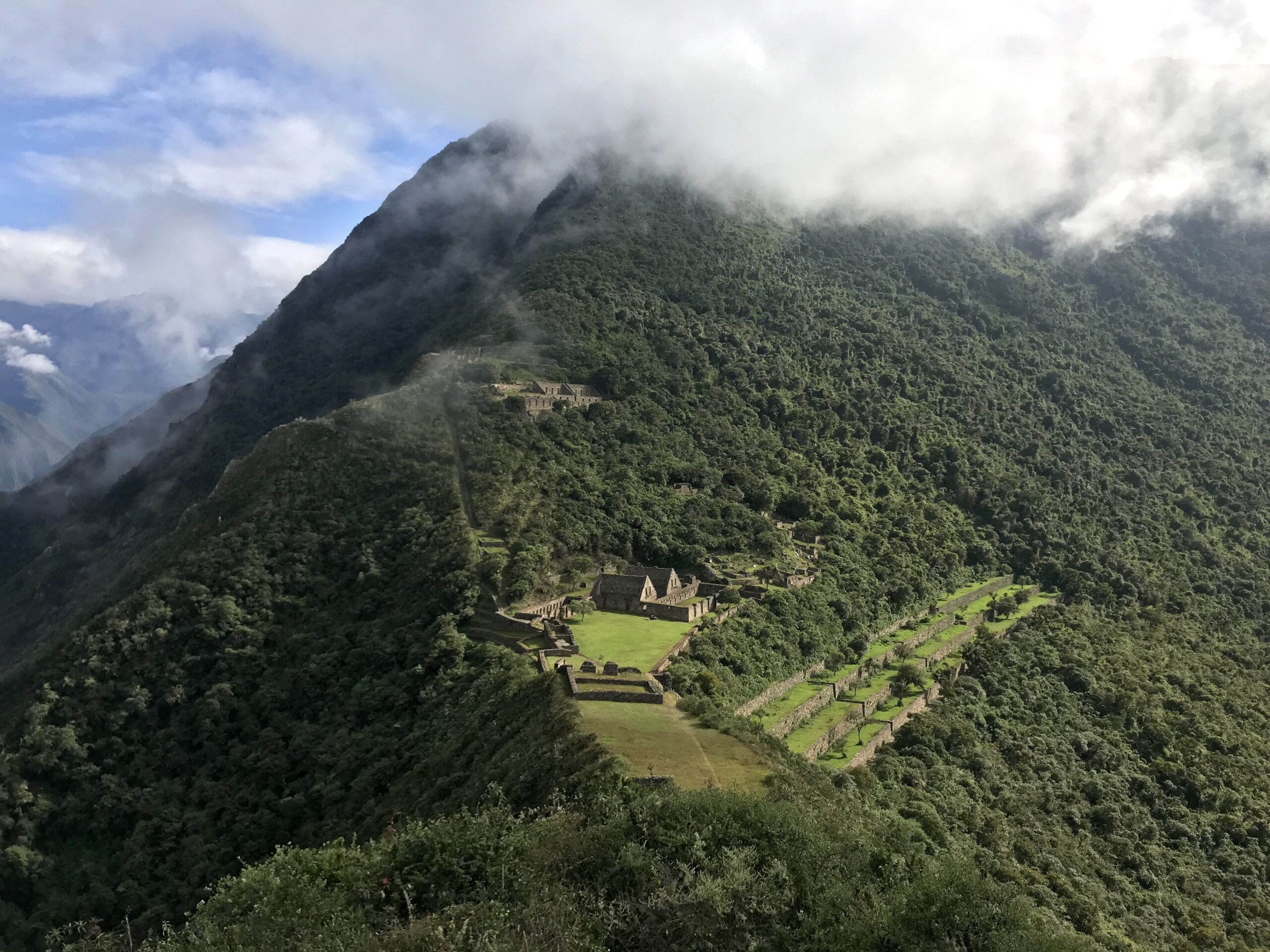At the Airbnb in Cusco is where I first heard about Choquequirao.

Located in the Vilcabamba range, at 3050m above sea-level and nearly 200 kilometres from Cusco, it is a 4-hour drive and a two-day hike away. You begin by descending 1600 m to the Apurimac river, followed by a climb on the other side of the canyon where you gain that elevation back (and more). Through most of the hike, there isn’t a smidge of shade, and dehydration and sunstroke, a real risk. The reward that lies at the end of it, is an enormous set of ruins dating back to the 15th and 16th centuries. Much larger than Machu Picchu, with 60-70% yet to be excavated. But also, more pristine, as few make it there.
And then when you’re done sightseeing, you go back the way you came. The entire journey typically takes 4 days.
Someone at the Airbnb had recently been there and heavily recommended it.
I was on the fence.
I had booked myself on a 5-day Salkantay trek to Machu Picchu. Afterwards, I had about a week more left in Peru. Did I want to spend most of that time on another trek to more ruins?
What followed was a slow process of information gathering, planning, finding a hiking buddy when I was least expecting it, and going back and forth on whether this was going to be a good idea.
The logistics were complicated, but a big draw for me was being able to plan the hike on our own: no guides, no tour agencies, just online trip reports and asking around. It meant we were flexible with the timings, and could slot it in between other plans. It meant we could squeeze it – or attempt to, anyway – into two-and-a-half days, as I did not have 4 days to spare.
Perhaps it was on the last day of the Salkantay trek that I finally decided. My legs were already sore, but they still had a little bit of life left. I had sent away my belongings to Cusco with the guide, keeping only what I’d need for the hike. I had a rest day in the Sacred Valley, between the two treks: a little peace and quiet, lots of food, a warm shower, catching up on sleep, and I figured, you’re only young once.



Day 0
After a full morning of sightseeing in Ollantaytambo, I took a shared cab to Cusco, where I was meeting my hiking buddy, Raoul. From there, we needed to somehow make it to Capuliyoc, where the trailhead is. The easier and more direct option is to hire a taxi, but we chose to take a colectivo instead.
A colectivo is a shared taxi service, usually run by private companies, plying major transport routes. Most, at least in Cusco, do not have any set schedules – they leave when they fill up. This means, busier destinations have more frequent service and Capuliyoc would have exactly zero. To complicate matters further, there’s no central starting point for colectivos; they leave from large garages managed by the corresponding private transport service, and they are located all around the city.
With some research, I had narrowed down a couple of operators with service to Abancay, the capital of the neighbouring Apurímac region. Colectivos going that way could be asked to drop us off at Ramal de Cachora. This is just the turn-off on the highway to Cachora, a point where some start the hike. Capuliyoc was past that. To cover that last section, we were told that “very likely” we would find taxis at the turn-off that would take us all the way to our destination.
Despite the layers upon layers of uncertainty, in the end, it was fairly uneventful. A long colectivo ride, a short break at a fruit stand, a quick interrogation by a cop regarding our passports, a fuss-free transfer to the taxi at the turn-off, and five-ish hours later, we reached Capuliyoc a little after dark in the evening. Along the way, we watched the sun set over the Vilcabamba mountains across the Apurímac river canyon, and thought about how we would soon be crossing this on foot.
At Capuliyoc, we had reserved a room for the night at a guest house called Choquequirao wasi. It was at the very end of the village, right next to the trailhead. Renzo, a friend of our Salkantay trek guide, runs the place and also guides treks to Choquequirao. Renzo had been extremely helpful while planning the trip: he had an unofficial trip guidebook with approximate taxi fares, estimated hiking times, a suggested itinerary etc., for those interested in doing it by themselves. Like us.
Renzo wasn’t around that night; he was out guiding a group. But the hosts knew to expect us and checked us in. We bothered them for a warm dinner (some good old Peruvian chaufa), bought some cold beer from a convenience-store-like room, and were then led to a rustic hut in the pitch-black fields behind the main house.
It was very dark, so we could only imagine what the view from the hut would be like, perched on the edge of the canyon.
Unfortunately, we would not find out, as we were leaving the next morning at 4 am.


Such an exciting trip report! I’m so glad you made the decision to go there while still being sore from the previous trip. The pictures are absolutely stunning! Looking forward to the next part!!!
Pingback: Trekking in Peru: Choquequirao, Part 2 - Beyond Trail Mix